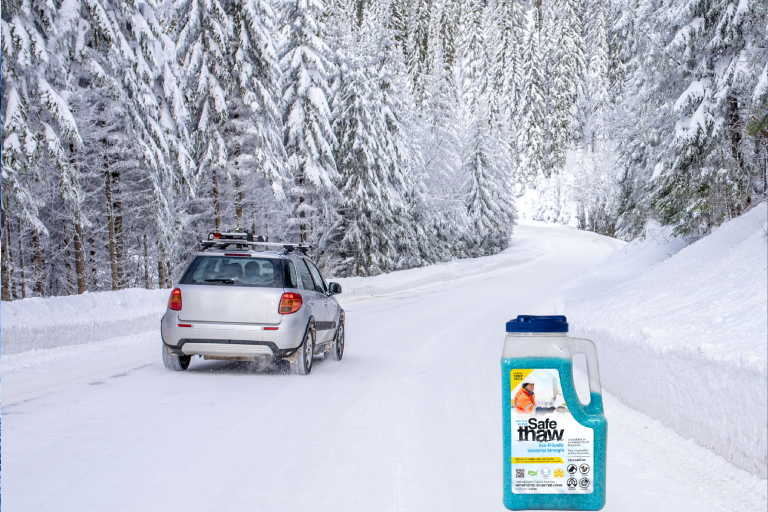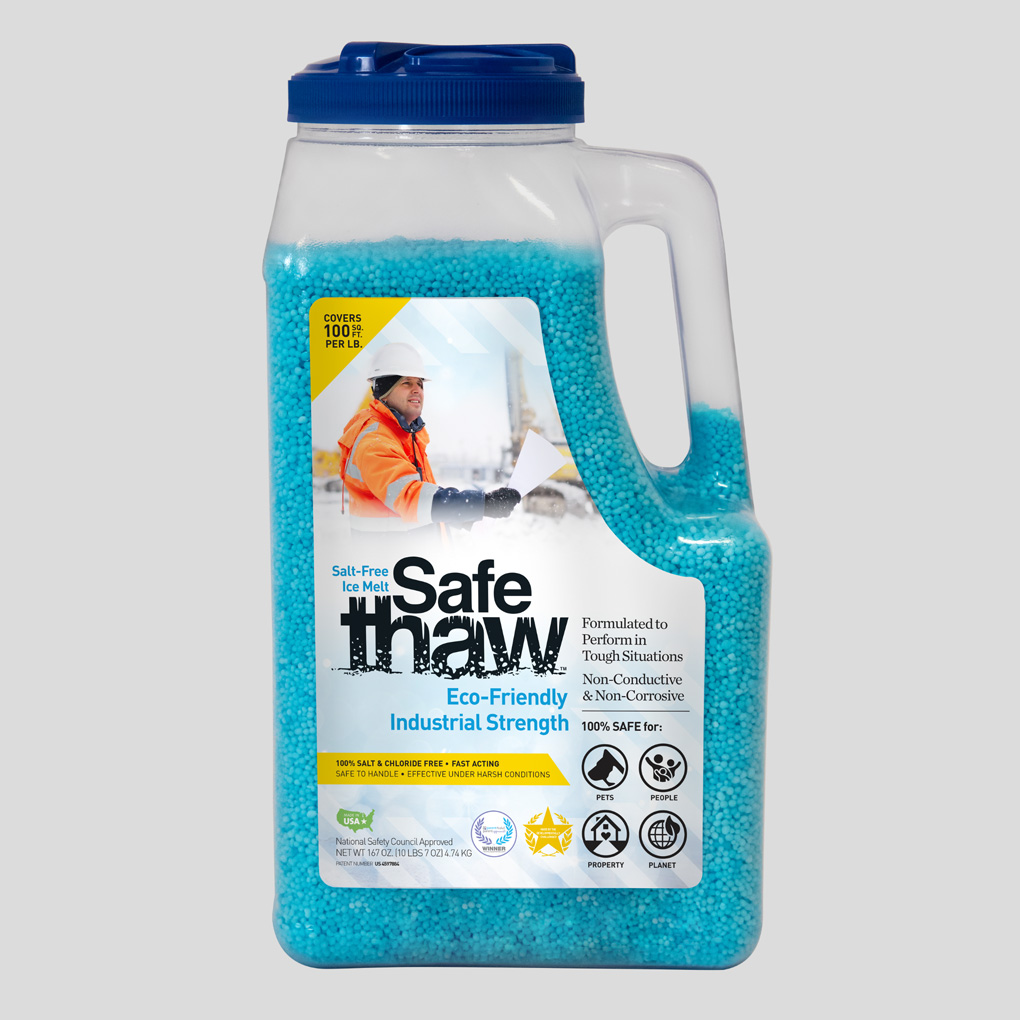At What Temperature Does Ice Melt? Factors That Influence Ice Melting

Life is full of simple questions with complex answers. One such query that seems straightforward but isn’t, pertains to the icy realms of winter. You might ask, “At what temperature does ice melt?” And while the textbook response is zero degrees Celsius (32 degrees Fahrenheit), the reality is a much more intricate dance of factors.

Safe Thaw
Safe Thaw was created as the ice management solution for tough winter environments. Ideal in commercial and industrial properties, shops, government agencies, bridges, and construction.
Delving Into The Basics
This mesmerizing dance begins with our primary dancer: temperature. But what does temperature mean? Temperature is a measurement of the average kinetic energy of the molecules in a system. In the case of water, once the system reaches zero degrees Celsius, the kinetic energy of the molecules is just enough to break the hydrogen bonds and transition from a solid to a liquid state.
Pressure’s Invisible Footprint
But let’s introduce a new character into this story: pressure. Pressure, though often overlooked, plays a crucial role in determining at what temperature ice melts. This dynamic factor can subtly alter the melting point, creating conditions where ice can melt under high pressures, even when the temperature is below freezing point.
The Intricacies Of Impurities
To complicate the story further, let’s introduce another player into the mix: impurities. From dust to salt, these foreign agents can interfere with the water molecule’s bonds, altering the temperature at which ice melts. It’s why the sea freezes at a lower temperature than freshwater, and why we use ice melt products, like Safe Thaw, on our roads and sidewalks.
Safe Thaw: The Star Performer In Ice Melting
Here’s where the narrative takes an interesting turn. If you’re looking to safely and effectively combat icy conditions, products like Safe Thaw come into play. Safe Thaw is designed to provide a safer environment during the frosty months by lowering the freezing point of water. It creates a melting effect, even when the temperature drops below the freezing point.
The Relevance Of “At What Temperature Does Ice Melt?”
So, what temperature does ice melt at? While zero degrees Celsius is our default answer, the dance of melting ice is choreographed by a host of factors, including pressure and impurities. If we look closely, we see a dazzling dance of physics and chemistry playing out on the winter stage.
100% salt & chloride-free, fast acting Ice Management Solution
The Finale: Implications Of The Ice Melting Dance
Understanding the factors affecting ice melt temperature is not merely academic. It has real-world implications that influence everything from how we design buildings to withstand heavy snow loads to how we select products to deice our driveways. With the knowledge that impurities such as Safe Thaw can lower the freezing point of water, we can mitigate the risks associated with icy conditions.
At a glance, the question, “at what temperature does ice melt?” might seem simplistic. But behind this query lies a captivating interplay of elements, each contributing to the melting process in their unique ways. By understanding these factors, we can better appreciate and navigate the icy realms of winter, armed with our newfound knowledge and reliable products like Safe Thaw. The world, as it turns out, is much more than meets the eye. It’s a ballet of factors, a dance of science and nature.
Try Also Our Other Winter Safety Products:
Safe Paw
The Original and #1 Selling Pet and Child Safe Ice Melt for over 20 years. Guaranteed environmentally safe –It won’t harm animals or children, and it won’t damage your property. That’s Safe Paw. Safe Paw can change how winter affects our planet.

Walk On Ice
The handy disposable canister can be taken everywhere, with the same 100% naturally occurring minerals that provide instant traction on ice or snow. Use it on sidewalks, steps, or as an instant traction agent for your car.



